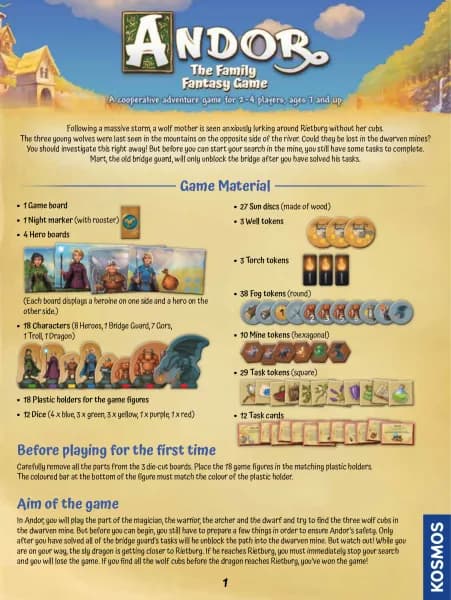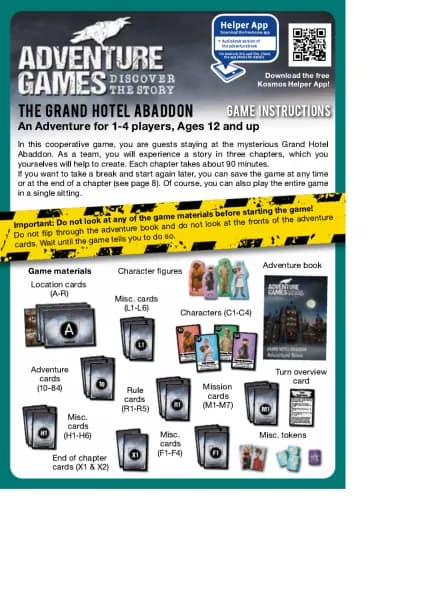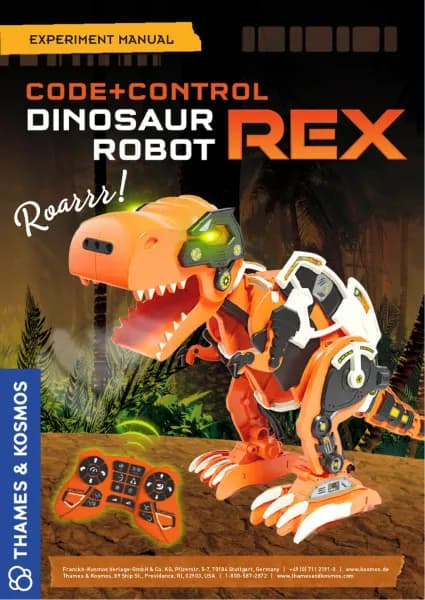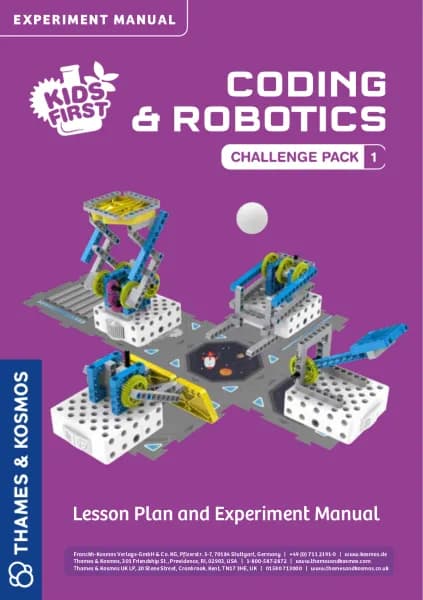Thames & Kosmos Mechanical Engineering: Robotic Arms handleiding
Handleiding
Je bekijkt pagina 13 van 40

Together, links and joints form what is
called a kinematic chain. The word
“kinematic” refers to how objects
move. In a robotic arm, the links in the
kinematic chain are constrained by
their connection points to the other
links — like how your elbow is
constrained by the range of motion of
your shoulder. To understand how a
robotic arm can move as a whole, you
can look about how each element in
the kinematic chain can move.
Often the end of the robotic arm, called
the end effector, is designed separately
from the rest of the arm. It is designed to interact
with objects in its environment, like a human
hand, but for specialized tasks such as welding,
gripping, spinning, applying materials, and so on.
LINKS AND JOINTS
In engineering, it is often necessary to create simplified
models of structures or systems in order to beer
understand their physical characteristics or behaviors.
When simplifying a robotic arm to beer understand it, the
mechanical parts can be thought of as either links or joints.
Links are the rigid structural elements of the robotic arm. In
this kit, this includes the frames and rods. The joints are the
pieces that allow for movement, such as the joint pins,
axles, gears, and pistons in this kit. Joints allow a link to
move by either rotation or translation (moving from one
point in space to another).
MOVEMENT THROUGH SPACE
Unlike a human arm, a robotic arm can have a lot
more freedom to move through space in different
ways. The movement of a robotic arm can be
described by the term “degrees of freedom.” The
position and orientation of an object in space can
be given by three components of movement in the
x, y, and z directions, and three components of
rotation around those axes. For a single object in
space, there are at most six degrees of freedom.
Each joint in a robotic arm
has a certain number of
degrees of freedom, which
might be less than the
maximum number of six. For
example, not all of the
pivoting robotic arm’s joints
can rotate 360 degrees.
The area defined by all of the positions in space that the
end of the robotic arm can reach is known as the
workspace. If the object that the robotic arm needs to
pick up is not in the workspace, the robot cannot pick it
up! The workspace depends on the degrees of freedom,
limitations of the joints, lengths of the linkages, and the
angles at which the object must be picked up.
CHECK IT OUT
11
Links and Joints
Bekijk gratis de handleiding van Thames & Kosmos Mechanical Engineering: Robotic Arms, stel vragen en lees de antwoorden op veelvoorkomende problemen, of gebruik onze assistent om sneller informatie in de handleiding te vinden of uitleg te krijgen over specifieke functies.
Productinformatie
| Merk | Thames & Kosmos |
| Model | Mechanical Engineering: Robotic Arms |
| Categorie | Niet gecategoriseerd |
| Taal | Nederlands |
| Grootte | 43838 MB |







